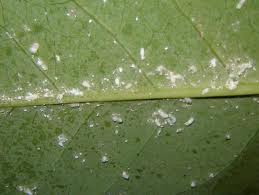Many people feel that a natural, non-toxic insecticide simply cannot be as effective as chemical insecticides.
They regard success stories of organic sprays as old wives’ tales and are skeptical about them.
But the result is that they resort to using dangerous toxic sprays without giving the organic solutions a chance.
We all know what damage we do to the environment when we use toxic sprays and poisons. Not only do we poison the environment as a whole, but we also ruin the ecological balance of our own gardens.
To the organic gardener, poisonous pesticides, toxic fungicides and all manner of toxic sprays are anathema.
Now it’s true that organic methods of eliminating pests are sometimes hit and miss. I cannot vouch for all of them; but there is one method that I have used that has given me a one hundred per cent success rate.
I am referring to the elimination of a bad infestation of mealy bugs on my citrus trees.
Let me give you an example of how effective a non-toxic insecticide can be.
A few weeks ago I noticed that one of my young lemon trees was looking very poorly. It’s leaves were dropping and the tree looked very unhappy.
Just looking at the tree, I couldn’t work out what was wrong with it but when I looked under the leaves I saw that they were infested with little white mealy bugs. They were literally sapping the life out of my lemon tree.
I only use organic methods in my garden so I had to find something quickly. After some research I discovered an easy non-toxic insecticide recipe that I decided to try out.
It was a simple mixture of a plain soapy dishwasher diluted with water and mixed with a dash of olive oil. My tree is still small so I was able to paint the underside of each leaf with the mixture using some cotton wool.
The interesting thing is that as I painted them the mealy bugs simply dissolved and disappeared. That was about two months ago.
My tree did lose a few of its leaves – probably those that were the most badly infested by the mealy bug. Anyway, the mealy bugs haven’t returned and I am hoping for a resurgence of new growth.
The odds look good so far. I’ll keep you updated.
